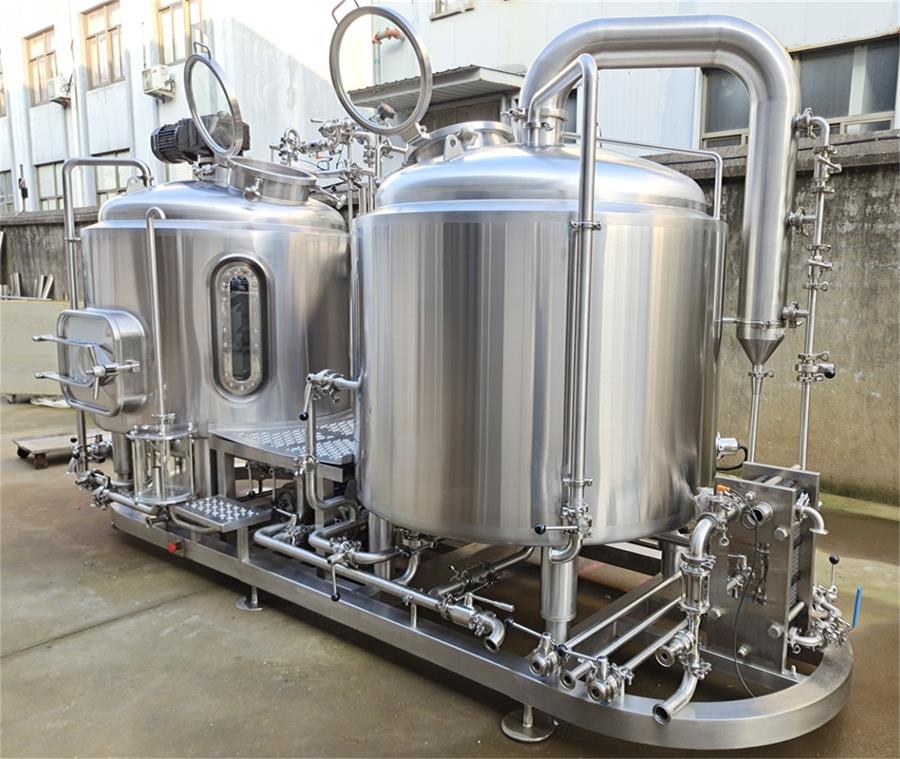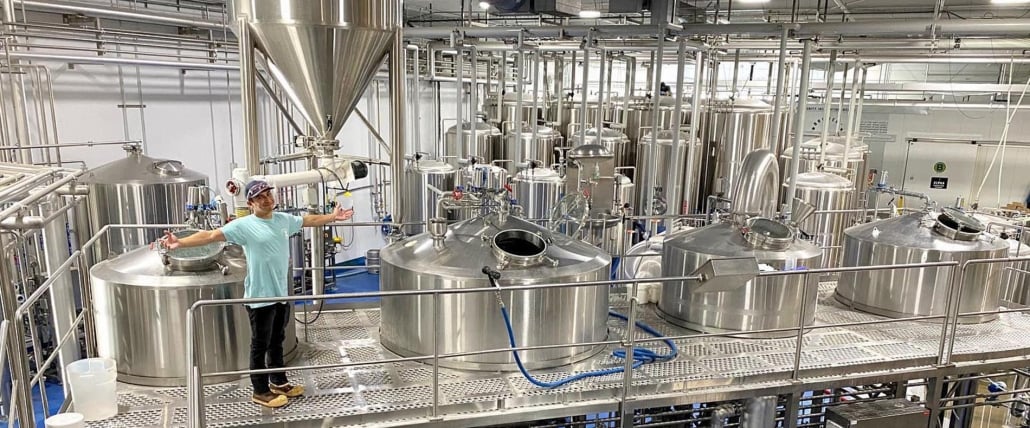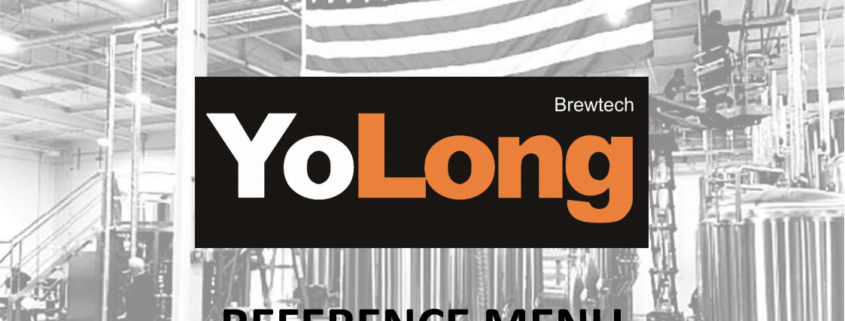5 BBL Stackable Brite Tanks
5 BBL Stackable Brite Tanks are stainless steel vessels used for storing, settling, clarifying, and serving beer after fermentation is complete. Brite tanks allow efficient use of space by stacking, come in different shapes like cylinders and conicals, and help achieve crystal clear beer with maximum shelf life. We discuss tips for choosing the right 5BBL brite tank, layout considerations, pricing, customization options, and more based on leading suppliers.
5 BBL Stackable Brite Tanks Equipment Guide
Brite tanks are available in different configurations when it comes to the number and orientation of stacks, conical or cylinder shape, cooling mechanisms, and accessories.
Types of 5 BBL Stackable Brite Tanks
| Equipment Type | Details |
|---|---|
| Vertical stackable | Cylindrical or conical tanks stacked vertically using interlocks |
| Horizontal stackable | Cylindrical tanks placed horizontally and stacked |
| Single unit | For small space or mobile use, no stackability |
| Dual cooling zone | glycol cooling in cone and jacket; better temp control |
| Cooling jackets | Integrated glycol, steam, or chilled water jackets |
| Glycol cooling coils | Internal or external heat exchanger coils |
Accessories for 5 BBL Brite Tanks
- Thermometers
- Sight glasses
- Butterfly valves
- Racking arms
- CIP spray balls
- Air stones
- Evaporator pan
- Casters – wheeled bases
Customization Options
Nearly all tank parameters can be customized as per brewery requirements and budget, including:
- Number of stackable units
- Dimension ratios
- Cooling mechanisms
- Materials of construction
- Surface finishes
- Fittings and accessories
- Automation level
Suppliers offer 3D models to visualize customized stacks. Modularity provides flexibility to expand capacity later.

Beer Clarification and Storage in Brite Tanks
After initial fermentation, beer is transferred to brite tanks for:
- Settling suspended particles like yeast and proteins
- Clarification through filtration to achieve crystal clarity
- Carbonation by sparging CO2
- Cold aging at 0°C to 34°F if required
- Serving ready beer to the taproom or packaging
The process equipment line-up typically includes:
- Main fermenters
- Glycol chiller with heat exchanger
- In-line micron filter
- CO2 tank with stone/sparger
- Transfer lines and pumps
- Control panel
5 BBL Stackable Brite Tanks Dimension Range
Typical 5 BBL Brite Tank Specifications
| Parameters | Typical range |
|---|---|
| Capacity | 5 barrels (155 gallons) |
| Diameter | 30 – 36 inches |
| Height | Up to 120 inches |
| Stack height | Up to 180 inches |
| Weight | 130 to 300 lbs |
- Conical bottom tanks require less vertical space versus cylindrical tanks for the same working capacity
- Optimal height allows enough headspace for foaming during transfers
- Smaller diameter tanks fit through doors and in brewhouse galleries
How to Design 5 BBL Brite Tank Layout
Proper layout based on material flow and construction constraints ensures sufficient space and access for trouble-free operation.
- Have at least 12-24 inches clearance around tanks
- Place tanks near glycol chiller unit with insulated, sloped glycol runouts
- Locate brite tank room/area on ground floor
- Position near packaging line if canned/bottled packaging planned
- Ensure material transfer aisleways and corridors are 30-36 inches wide
- Allow overhead clearance for hoist beams if needed
- Make provisions for drainage slope and floor trenching
Consult an expert brewery designer for optimal layout and material flow based on brewhouse capacity, production schedule, and site constraints.
Cost Impact Factors for 5 BBL Stackable Brite Tanks
Prices start around $8000 and go up based on choices of customization and accessories:
Cost Impacting Factors for 5 BBL Brite Tanks
| Parameter | Typical Price Impact |
|---|---|
| More stackable units | +$2000 per additional tank |
| Conical bottom | +$1500 over cylindrical |
| Exotic materials (stainless steels) | +$1000 to $4000 |
| Automated CIP | +$1500 to $5000 |
| Casters | +$500 |
| Custom fittings | +$300 per component |
| Logo etching | +$800 |
Bulk orders, seasonal deals, and association memberships can entitle 5-15% discount on listed price.
Financing options like leasing reduce upfront capital expense. Buyback guarantees provide flexibility to upgrade later.
Top 5 BBL Stackable Brite Tank Manufacturers in USA
Leading American Brite Tank Brands
| Supplier | Price Range | Offerings |
|---|---|---|
| JV Northwest | $7000 – $15000 | Broad range; modular customization |
| Premier Stainless | $10000 – $40000 | High-end exotic materials |
| American Beer Equipment | $5000 – $15000 | Value for money fitouts |
| Pro Refrigeration | $8000 – $25000 | Turnkey cooling solutions |
| Pentair Beverage | $6000 – $12000 | Quality glycol tanks |
JV Northwest provides free shipping on 5BBL-plus orders with the best lead times. Premier Stainless specializes in stainless steel clad copper tanks for rapid cooling. American Beer Equipment offers all-inclusive accessories and starter kits. Pro Refrigeration focuses on integrated glycol chilling systems. Pentair leads in automated CIP solutions.
5 BBL Brite Tank Installation Best Practices
Follow supplier guidelines closely during tank installation for safe trouble-free commissioning:
5 BBL Brite Tank Mechanical Installation
| Activity | Method |
|---|---|
| Lifting full tanks | Use nylon lifting straps Crane/hoist above 300lb capacity |
| Stacking | Use non-skid foam sheets Ensure alignment |
| Floor mounting | Prepare reinforced concrete pads Use anchor bolts |
| Leveling | Use spirit level Adjustable feet |
| Pipe fittings | Use sandpaper, specific elbows Ensure isolation valves |
5 BBL Brite Tank Glycol & Electricals Installation
| Activity | Method |
|---|---|
| Glycol runouts | Insulate lines Slope 1” per 10’ run Ensure trapped heads |
| Glycol supply | Use primary-secondary pumps Ensure flow switches |
| GFCI circuits | Dedicated breaker box Weatherproof outlets |
| Control panels | Mount at accessible height Wire as per ratings |
Following best practices ensures consistency, safety, and reliability.
5 BBL Brite Tank Operation and Maintenance
Day-to-day operation and preventative maintenance of brite tanks prevent downtime and quality issues:
5 BBL Brite Tank Routine Operation
| Activity | Frequency |
|---|---|
| CIP/SIP | After every brew per SOP Ensure alternating chemicals |
| Glycol supply | Continuous top-up Inspect external coils weekly |
| CO2 purge/sparge | Before transfers Check for leaks using soap solution |
| Draining | After dry hopping/aging As per beer SOP |
| Temperature | Continuous monitoring Inspect controls, RTDs monthly |

5 BBL Brite Tank Maintenance Schedule
| Task | Frequency |
|---|---|
| Inspect fittings, gaskets | Monthly |
| Check door seals | Monthly |
| Verify sight glasses | Monthly |
| Spark test glycol coils | Annual |
| Inspect racking arm movement | Annual |
| Clean glycol solenoid valve filters | Annual |
Following the above protocols prevents unplanned downtime and maintains quality. Keep logbooks of each task. Tanks may be serviced annually by technicians.
FAQs
Q: How many 5BBL brite tanks are ideal for a small brewery?
A: A good rule of thumb is to have brite tank capacity at least 20% of the main fermentation volume. For a 7BBL fermentation system, 2-3 units of 5BBL brite tanks allows flexible storage options.
Q: Should brite tanks be placed inside the cold room or externally?
A: External placement saves real estate inside the cold room which is expensive. Insulated, sloped glycol lines allow chilling brite tanks remotely up to 50 ft. away.
Q: What material is best – stainless steel or copper?
A: Stainless steel is most popular for its durability and corrosion resistance. Copper offers better heat transfer for rapid cooling but needs long-term maintenance against corrosion and leaks. Stainless steel grade 316L is suitable for most craft breweries from a cost perspective.













